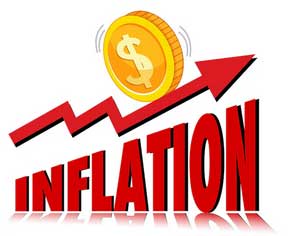The Fed’s Next Move: How the Latest Inflation Report Affects Interest Rates
Tame Inflation Report Keeps Fed Rate Cut on Track
The latest Consumer Price Index (CPI) report brought some relief to the Federal Reserve, with inflation rising less than expected in September. The annual inflation rate ticked up to 3%, but the reading came in lower than economists’ forecasts, keeping the Fed on track to cut interest rates again next week.
The CPI report showed prices rose 0.3% from August, a modest increase that suggests the Fed’s decision to cut rates next week is all but certain. According to futures contracts, traders are pricing in a near-100% chance of a quarter-point interest rate cut, which would bring the policy rate to 3.75%-4.00%. A December rate cut also remains likely, with traders putting about a 55% chance on another rate cut in January.
What Does This Mean for the Economy?
The tame inflation report is a welcome reprieve for the Fed, which has been under pressure to cut interest rates to support the economy. The jobs market has shown signs of weakness, with the unemployment rate rising to 4.3% in August, the highest since 2021. Private payroll processor ADP reported that the US economy lost 32,000 jobs in September, far shy of expectations.
The Fed’s dual mandate is to maintain low unemployment and stable inflation. With inflation hovering above the 2% target, the central bank has been cautious about cutting rates. However, the recent slowdown in hiring and rising unemployment rate may give the Fed room to maneuver.
Impact on Social Security Benefits
The CPI report also has implications for Social Security benefits. The Social Security Administration announced that benefits will rise 2.8% in 2026, the annual cost-of-living adjustment (COLA) that helps beneficiaries keep pace with inflation.
Market Reaction
The dollar index fell 0.078% to 98.86 after the CPI report, while the Toronto Stock Exchange opened higher, with the S&P/TSX composite index up 0.4%. The market reaction reflects expectations of further rate cuts, which would support economic growth.
Looking Ahead
The October CPI report will also be delayed due to the government shutdown, and it’s unclear when the data will be available. The Fed will likely rely on recent data and private-sector supplements to guide its decision-making process. As JPMorgan chief US economist Michael Feroli noted, “Fed officials kind of have a sense of the message that they want to give to the market about December. And so if you go past November, I think then they’re going to have some issues in terms of how they’re talking about policy to the market.”
The Fed’s decision next week will be closely watched, with investors and economists parsing every word for clues about the future path of interest rates. One thing is certain, however: the Fed is poised to cut rates again, and the economy will be watching closely for signs of what’s to come.
Navigating the current economic landscape in the USA requires a combination of staying informed, understanding the Federal Reserve’s decision-making process, diversifying your investments, considering the impact of interest rates and planning for the future. Here are some key points to consider:
Stay Informed
- Keep up-to-date with the latest economic news and data releases, such as GDP growth rate, inflation rate and unemployment rate.
- Follow reputable sources like The New York Times, Bloomberg and Deloitte Insights for analysis and insights on the US economy.
Understand the Fed’s Decision-Making Process
- The Federal Reserve responds to inflation and economic data by adjusting interest rates to maintain low unemployment and stable inflation.
- Understand how the Fed’s decisions can impact the economy, such as higher interest rates reducing inflation but potentially slowing down economic growth.
Diversify Your Investments
- Spread your investments across different asset classes, such as stocks, bonds and real estate, to manage risk.
- Consider investing in companies with strong fundamentals, like Comfort Systems USA Inc, which has shown a 16.30% increase in stock price.
- Diversification can help you ride out market volatility and capture growth opportunities ¹.
Consider the Impact of Interest Rates
- Changes in interest rates can affect your investments and finances, such as mortgage rates and credit card interest rates.
- Higher interest rates can reduce borrowing and spending, while lower interest rates can stimulate economic growth.
- Consider how interest rate changes might impact your investment portfolio and adjust accordingly.
Plan for the Future
- Take into account the potential effects of economic trends on your long-term financial goals, such as retirement or buying a house.
- Consider working with a financial advisor to create a personalized investment plan.
- Deloitte’s economic forecast suggests that the US economy will experience slower growth in 2026 due to higher tariffs and reduced migration, but will rebound in 2027 ².
Additional Tips
- Monitor Tariffs and Trade Policies: Understand how changes in tariffs and trade policies can impact specific industries and the overall economy.
- Keep an Eye on Inflation: Inflation can erode purchasing power and impact consumer spending. Consider investments that historically perform well in inflationary environments.
- Consider Demographic Trends: Changes in population demographics can impact housing, healthcare and other industries. Invest in areas with growing demand.
- Stay Adaptable: Be prepared to adjust your investment strategy as economic conditions change.
By following these tips and staying informed, you can navigate the current economic landscape and make informed decisions about your finances.







